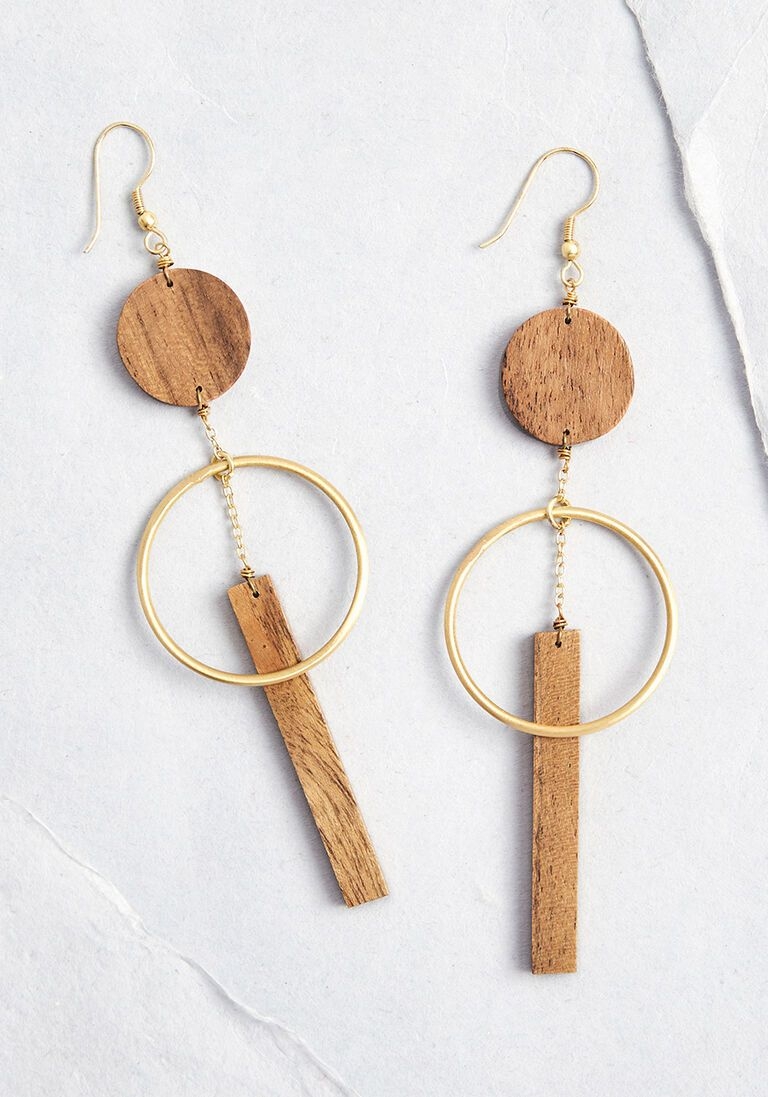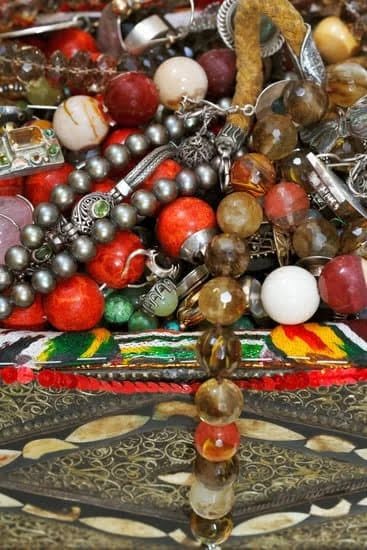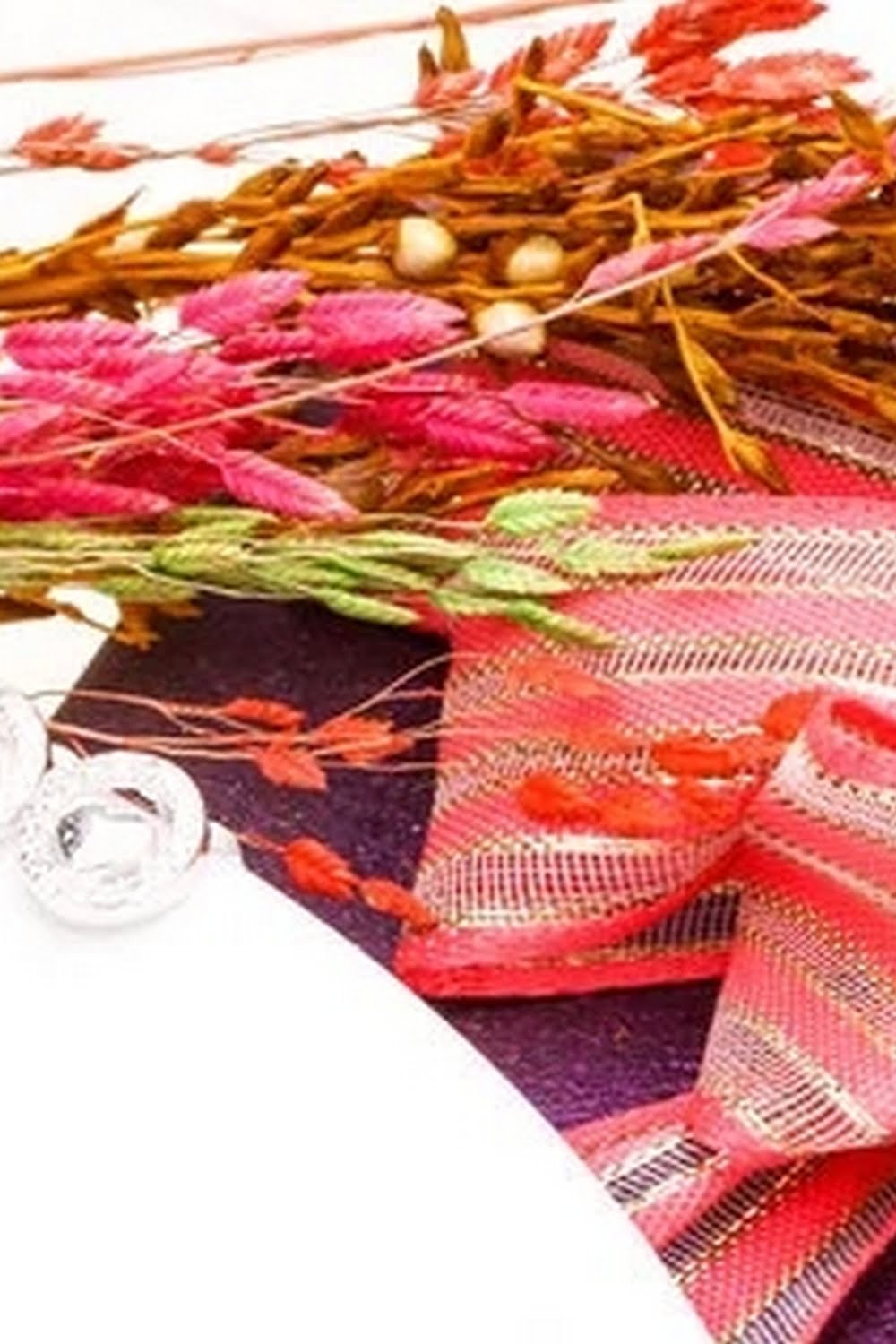Jewelry making tools and materials are essential to creating beautiful pieces. Some basic supplies that any jewelry maker needs include pliers, saws, hammers and files to shape metal, as well as beadstringing tools like a bead board and thread snips.
There are also enabling tools such as bead crimpers, jump rings, clasps and more that are used for fastening and linking components together. Depending on the type of project, you may need other specialty tools such as calipers for measuring, mandrels for formingrings or stamping sets for texturing metal surfaces.
In addition to these tools, there is also an endless variety of jewelry making materials available ranging from gemstones and beads to the ever-popular Swarovski crystals. Bead stringing materials such as beading wire comes in different strengths and coatings depending on the application while metals such as sterling silver or gold may need different alloys depending on its end use.
Lastly there are findings which come in all your favorite styles (in sterling silver or antique brass) that help bring your designs to life.
Using the right kinds of jewelry making tools and materials can save a lot of time. For instance when you need to carve intricate details in metal you’ll want to use fine saw blades instead of coarse ones; similarly using the wrong kind of beading wire might damage a delicate crystal pendant if it’s too stiff or weak even with the use of crimp tubes or covers.
To make sure that each design is up to a professional standard one should become familiar with different hardware configurations so that components such as clasps closure securely closes every time instead of coming apart halfway through the task at hand. With these tips in mind, anyone can start designing beautiful pieces with confidence knowing they have the right supplies and know how.
When it comes to jewelry making, it’s important to invest in high quality tools and materials so your work will last over time. Precious metals like gold or sterling silver require special care when wrapped around glass beads since one wrong move could change the shape completely; likewise selecting sturdier supplies like nylon coated wires eases tension during prolonged tasks since they don’t easily break after multiple flexes which helps improve workflow efficiency overall.
When using highly sought after gems it’s recommended that extra precautions be taken since any mess up could result in tremendous wasted investments – but having good empowering jewelry making tools can minimize such risks completely if used correctly.
Creative Design Ideas for Jewelry Making
Jewelry making can be an incredibly inspired and fun way to express your creativity. It’s no longer necessary to visit a local jewelry store or speciality catalogs in order to find the perfect design for you.
Instead, you can easily create beautiful pieces right at home with some basic supplies and tools. While there are many standard tools and materials used in jewelry making, there still remains a world of creative possibilities when it comes to the types of techniques that can be used in each piece.
One popular technique is stringing. This technique involves threading beads on a specialized stringing material such as jeweler’s wire, silk cord, hemp or leather. Using this method, you can create necklaces and bracelets that would not look out-of-place in any boutique. This can also be combined with other techniques such as knotting between the beads. This will make an interesting contrast in the finished piece, adding character and complexity to the overall look.
Another technique that is often overlooked but incredibly effective is wire wrapping. This method is great for creating unique pendants from stones or semi – precious gems; simply wrap fine gauge wire around the stone or gem until it’s completely contained within the wrapper’s complex weave of interconnected metal strands.
The fairy tale-inspired delicate results are sure to please any eye that captures its beauty. With various colors of precious metals available – like silver, gold or rose gold – you can even use different hues together for added interest in your designs.
Last but not least let’s not forget about metalwork which uses metal strip stock cut into smaller pieces then soldered together with brazing rods or furnace solder depending on what piece of equipment you have access to.
These items could take on shapes like leaves, flowers or twisty straps along with patterns created by hammering shapes onto flat sheet metal stock giving additional texture and depth to your work; don’t forget piercing thin sheet metal with round hole punches allowing intricate detail features.
All these techniques combined can give those simple designs a unique sparkle for any occasion.
Troubleshooting Common Jewelry Making Problems
Jewelry making is a fun and creative hobby, but it can sometimes prove to be difficult. One of the most common issues experienced by jewelry makers is when it comes to assembling complex projects or tackling tricky knots. As such, having the right tools and materials on hand is essential for successful and enjoyable jewelry creation.
The first tool needed for any jewelry making project is pliers and wire cutters. These two items are essential for cutting and manipulating materials in order to create unique pieces of wearable art. Other more specialized jewelry pliers are also useful for forming specific types of shapes or tight connections when stringing beads and jump rings together. A good selection of sizes and styles should be collected in your supplies to cover as many possible scenarios as possible.
In addition to basic tools, there are several other materials that can make jewelry making easier and more successful. Loss bead boards are great for organizing accessories prior to assembly, while tweezers allow you to pick up small elements safely instead of pinching them with your fingers.
Magnifiers also come in handy when detailed work is required, ensuring that all links are secure before putting on the finishing touches. With these pieces at the ready handling tough knots or intricate designs won’t be so scary after all.
Apart from physical tools, a few helpful tips may prove equally important too – especially those dealing with patterns or special techniques used in advanced construction methods like macramé or crochet jewelry. Enrolling in courses found online can give newcomers an idea of what might work best for their individual project goals or simply provide inspiration for different approaches that yield dynamic results every time.
Seeking advice from other professionals within the community via forums or dedicated Facebook groups will take one’s skill level from basic to expert far faster than attempting it alone.
Money Saving Tips for Jewelry Making
Jewelry making is a passion for many, but the cost of materials and tools can be quite high. Fortunately, there are several tips available that can help the savvy consumer save on purchase cost without compromising quality. One of the most important money-saving tips when it comes to jewelry making tools and materials is to research different suppliers before committing to any purchase.
Many suppliers offer discounts when buying in bulk, or have special sales periods throughout the year which allow shoppers to save even more. Additionally, taking advantage of online stores that provide free shipping during certain promotional periods may also help cut down costs substantially.
When it comes to actual materials and tools required for jewelry making, there are several ways to find quality items for lower prices. Shopping at local craft shows or venues may result in finding rare items and one-of-a-kind components at discounted prices.
Similarly, looking around garages sales or outlet malls could also be beneficial as these events tend to attract vendors selling unique items at cut-rate prices. Of course, online shopping using websites such as eBay or Etsy are great options for finding pre-owned but still useful supplies such as clasps or pliers that can help in reducing expenditure drastically too.
Finally, take advantage of coupons and promotions offered by various companies regularly via their websites in order to get discount codes for further savings All in all, there are plenty of ways for jewelry makers on budgets can cut back on costs when purchasing necessary tools and components needed for their projects without sacrificing quality.
Keeping an eye on trading boards as well as being creative with sourcing materials can help you find what you need at a fraction of the price you would expect.
Reviews of Popular Jewelry Making Tools and Materials
Every craftsperson needs a quality set of tools to execute their projects. Jewelry making is no exception. From delicate pliers and files, to precision saws and blow torches, the right tools will make a difference in your finished product.
The same applies to materials such as metals, gems, and wires – all essential ingredients for successful jewelry creations. But with so many different types of tools and materials on the market, it can be difficult to determine what works best for your business or hobby needs. In this guide, we’ll review some of the popular jewelry making tools and materials available today so you can compare different products before making a purchase decision.
Klein Tools offers a wide range of hand-held devices specifically designed for jewelry crafting. Their plier sets are ideal for detailed tasks such as bending, forming and cutting wires with accuracy and precision. Their mini saw set has been popular amongst artisans because its ergonomic design grants better control of intricate cuts.
each tool features an anti-slip grip for extra comfort during work sessions and reduces fatigue in hands and wrists from extended use. On top of that Klein Tools also offers polishing cloths which exfoliate gemstones without harming their polished exterior layers – perfect for any finishing touches before showcasing final pieces.
Eco-tools is another brand known worldwide for their reliable jewelry supplies and equipment that help preserve the environment while allowing artisans to get the job done efficiently with brilliant results every time.
The etching tool is one example of how eco-friendly approaches are being introduced to equipment-oriented fields – it allows creators to add greater detail to small surface areas than traditional methods due to its compact design which decreases emissions compared to standard machinery variants like electric engravers.
Eco-tools also provides tweezers made out of recycled stainless steel designed specially with smudge resistant tips; perfect for retrieving small lost items among beads or mod podge glue drops without creating more mess during cleaning processes later on.
Finally, there are some essential materials required in order get started designing beautiful pieces – metal alloys (which come either pre-treated or not depending on desired finish), precious metals such as gold silver platinum palladium , wires & fibres: all necessary components needed alongside base components typically seen when constructing handcrafed jewellery. With different levels of hardness & malleability available at suppliers around world ( as well increasing trend towards using renewable sources) you now have access amazing selection part production various lifeforms.
Many designers also incorporate synthetic stones into their projects too: Sapphires, Rubies Synthetic diamonds all form part high-end collections easily comprable compexs yet durable enough everyday wear help stick budget restrictions whem sourcing materials too.
Tips for Storing Jewelry Making Items
There are many different ways to store jewelry making supplies and it can be overwhelming to know what will be the most effective way. The following tips will help ensure that your jewelry making items are well-stored, organized, and accessible.
First and foremost, you need to decide how much room you have available. If you have a limited amount of space available, you may consider investing in drawers or plastic bins to house your materials. This sectionalized approach allows for better organization, as each container has multiple compartments with different sections labeled accordingly.
Alternatively, if room isn’t an issue then you could also look into using open shelving or custom furniture to make full use of the space and precisely organize your items however desired. It’s important to note that if you choose this option then it is important to get stable furniture that is strong enough to hold all of your items without any warping over time; this will ensure maximum longevity for the pieces stored within them.
When storing your jewelry making materials, make sure that they are free from dust and dirt build up. Even seemingly imperceivable amounts of dirt sitting on different components can still ruin pieces should they start working together at some point – therefore it is very important to keep these things clean and away from any moisture or debris.
Additionally, for expensive tools such as pliers or cutters there are special cases where one can safely store the tools without damaging them or rusting in humid conditions; these cases also segregate tools away from each other so they don’t mix when not in use.
Finally, once all of your items are stored properly do a final check around the edges of your workspace – unpolished threads hanging around can sometimes snag on material when handling which may prove disastrous later down the line – so take extra precaution here by snipping off ends with dedicated scissors or nail clippers before projects begin.
Popular Jewelry Making Trends
Jewelry making is quickly becoming a popular form of expression and creativity. The ability to design unique pieces that represent an individual’s sense of style and their personality is an ever-growing trend in the fashion world. With the right tools and materials, jewelry makers can create pieces that speak to their inner artist.
The most important element of any piece of jewelry is the metal used to make it. There are wide selection of metals available for jewelry making including gold, silver, brass, bronze, aluminum, copper and more. Gold has always been a popular choice for many jewelry makers due to its durability which makes it ideal for using when crafting intricate designs with multiple details.
Silver is another popular metal as it is much less expensive than gold but still provides beautiful results when used in design work. Copper also attracts a great deal of attention due to its affordability and ability to be easily molded into various shapes while still maintaining a high-level of visual appeal.
In addition to the type of metal used in each project there are also other essential tools and materials needed for successful completion such as soldering irons, drill bits, files, pliers and saws. Jewelry makers also need access to additional items such as stone setting kits or faceting machines if they are looking to add extra flair or accents to their pieces.
Last but not least beads and findings are necessary when incorporating strings into your pieces or creating complex settings with semi-precious stones or diamonds alike. While certain hobbies require specialized tools there are often tips tricks and shortcuts that can be utilized when working on individual jewelry projects so even beginners can create meaningful staple pieces for years to come.
Tutorials for Beginner Jewelry Makers
Jewelry making has become a popular hobby for people of all ages, but what tools and materials are needed to start crafting jewelry? For a beginner jewelry maker, it is important to understand the fundamentals of making jewelry before attempting to make their first creation. This tutorial will provide an explanation of the different types of jewelry making tools and materials that are used to craft beautiful pieces.
One of the most important tools for a beginner jewelry maker are pliers. Pliers allow craftsmen to seamlessly work with wire and prepare chain links in various shapes and sizes.
Not only this, but they can be used to hold items while being filed, cut or otherwise shaped. There are four main types of pliers which include round nose pliers, flat nose pliers, chain nose pliers and bent nose pliers – each having its own specific function within the artistry of Jewelry making.
Jump rings are necessary when creating designs with multiple components, allowing chains and findings to link together securely. They come in different sizes depending on what kind of design is needed and should be purchased in bulk at local craft stores or online retailers.
Chain maille is frequently made utilizing jump rings as a core unit – allocating accurate size variation based on desired shape or form. Finding beads suitable for your project should always be taken into account, as some materials might not be ideal for certain creations; semi-precious stones such as Turquoise and Rose Quartz are two materials that offer interesting characteristics for crafted pieces such as earrings and necklaces that require special care when handling if breaks occur over time.
Lastly, clasps help secure ends together so items can successfully remain whole; toggle clasps are an option found easily online from retailers or in-store from craft stores like Michaels or Joann Fabrics; they generally come nickel free due to irritation issues caused by sensitivity of skin contact near the neck region.
Furthermore no-knotting techniques can be applied here as memory wire can create loops effortlessly with results similar to traditional clasp usage when structural integrity needs additional attention during completion stages of Jewelry Making processes With these tips any beginner can get started right away crafting beautiful pieces.

Welcome to my jewelry blog! My name is Sarah and I am the owner of this blog.
I love making jewelry and sharing my creations with others.
So whether you’re someone who loves wearing jewelry yourself or simply enjoys learning about it, be sure to check out my blog for insightful posts on everything related to this exciting topic!





